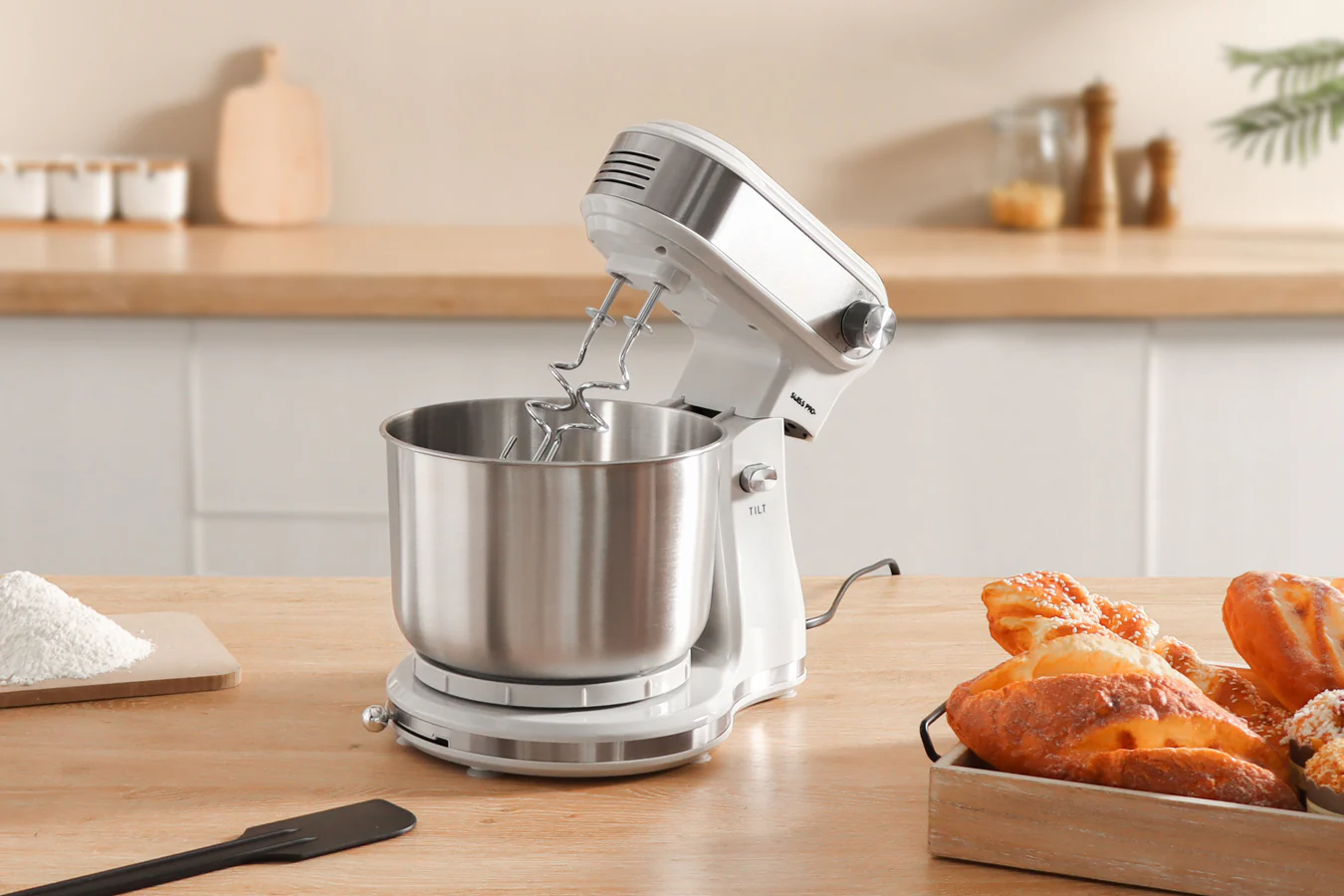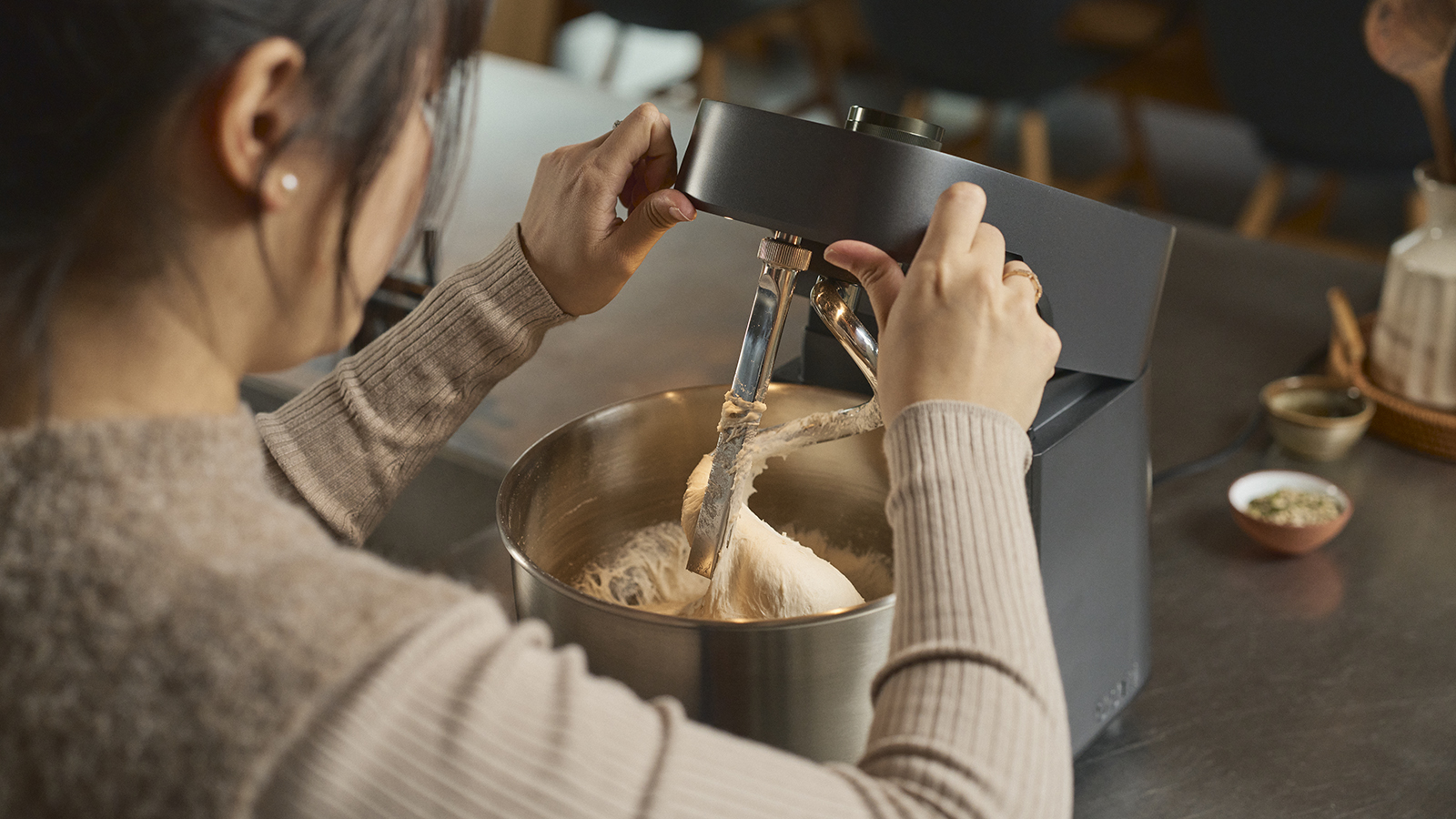Welcome, fellow kitchen creators! If you’re here, chances are you’re either dreaming of your first stand mixer or considering an upgrade. As you dive into the specs, you’ve likely stumbled upon a term that sounds both important and a little intimidating: the motor. Specifically, you’re asking, What Is A Direct Drive Motor and why should I care? Let’s pull back the curtain. Think of me as your personal guide, here at Stand Mixer Pro, to demystify the tech so you can get back to what matters: creating delicious food. The motor is the heart of your mixer, and understanding this one key feature can be the difference between a good investment and a great one.
The Nitty-Gritty: What Is a Direct Drive Motor, Really?
In the simplest terms, a direct drive motor is exactly what it sounds like: a motor that delivers power directly to the part that does the work—in this case, the attachment hub of your stand mixer.
Think of it like this: imagine riding a unicycle. The pedals are attached directly to the wheel. Every bit of energy you push into the pedals goes straight to turning that wheel. There’s no chain, no gears in between losing energy. That’s the principle of a direct drive system.
Now, contrast that with a traditional 10-speed bicycle. You pedal, which turns a gear, which pulls a chain, which turns another gear, which finally turns the back wheel. Every point of connection in that chain (pun intended) is a place where a tiny bit of energy and momentum is lost. This is how a belt-drive motor works in many appliances. It uses a belt and pulleys to transfer power from the motor to the mixing head.
Expert Take from Stand Mixer Pro: “A direct drive motor is all about efficiency. By eliminating the ‘middleman’—the belts and extra gears—more of the motor’s raw power actually reaches your dough hook or whisk. This translates to better performance, especially under pressure.”
So, when we talk about a what is a direct drive motor in the context of a stand mixer, we’re talking about a more efficient, streamlined design where the engine is directly connected to the transmission. This design has some serious implications for your baking.
The Big Showdown: Direct Drive vs. Belt Drive Motors
Okay, so we know the basic difference. But how does that play out on your countertop when you’re facing down a stiff gingerbread dough? Let’s put them head-to-head.
Power and Efficiency
This is the main event. Because a direct drive motor has no belt to slip or stretch, and fewer gears to create friction, it loses very little power between the motor and the bowl. A 325-watt mixer with a direct drive motor can often outperform a 500-watt mixer with a less efficient belt-drive system.
- Direct Drive: Highly efficient. Most of the wattage is converted into mixing power (torque).
- Belt Drive: Less efficient. A portion of the wattage is lost to heat and friction in the belt system. It needs a higher wattage rating to produce the same amount of mixing power.
This is why you’ll see premium brands like KitchenAid championing their DC (Direct Current) direct drive motors in models like their Pro Line series. They deliver incredible torque without needing a ridiculously high wattage number on the box.
Noise Level
Ever had a stand mixer that sounds like a jet engine taking off? It might have been a belt-drive model. More moving parts—belts, pulleys, gears—often create more mechanical noise. A what is a direct drive motor system is generally quieter because of its simpler, more direct construction. Your family and pets will thank you.
Durability and Maintenance
Fewer moving parts also means fewer parts that can wear out, break, or need replacing. A belt can stretch, dry out, and eventually snap over years of heavy use. With a direct drive system, that’s one less thing to worry about. These motors, especially the brushless DC types found in high-end mixers, are built for the long haul. My first serious stand mixer had a direct drive motor, and it’s still going strong in my sister’s kitchen 15 years later. That’s the kind of reliability we’re talking about.
Mixer Size and Weight
Interestingly, the efficiency of a direct drive motor allows it to be more compact. However, stand mixers that use them are often quite heavy. This weight isn’t a bug; it’s a feature! The solid, all-metal construction required to house these powerful motors provides the stability needed to keep the mixer from “walking” across your counter when kneading a heavy load of bread dough.
| Feature | Direct Drive Motor | Belt Drive Motor |
|---|---|---|
| Efficiency | Very High (less power lost) | Moderate (power lost to friction) |
| Performance | Excellent torque, consistent speed | Can struggle with heavy loads |
| Noise Level | Generally Quieter | Can be Louder |
| Durability | High (fewer parts to fail) | Moderate (belts can wear out) |
| Commonly Found In | Premium Models (e.g., KitchenAid) | Entry-level & Mid-range Models |
Why Does a Direct Drive Motor Matter for Your Baking?
This is the real question, isn’t it? Who cares about the engineering if it doesn’t make a better cookie? Well, I’m here to tell you it absolutely does.
Tackling Tough Doughs with Ease
If you’re a bread baker, listen up. Kneading dough is the ultimate test for a stand mixer. It requires sustained power and torque. A mixer with a what is a direct drive motor excels here. It delivers consistent power directly to the dough hook, kneading smoothly without straining or overheating. You won’t hear the motor groaning or the speed fluctuating as it works through a dense, low-hydration sourdough. It just powers through.
Achieving Consistent Speed for Delicate Tasks
On the other end of the spectrum, think about whipping egg whites for a delicate meringue or angel food cake. You need a consistent, unwavering speed to incorporate air evenly. The efficiency of a direct drive motor provides incredible speed control. When you set it to speed 8, you get speed 8—not a speed that dips and surges as the motor struggles. This control is critical for achieving light, airy textures.
Renowned pastry chef and author, Amelia Grant, often says, “Your mixer’s motor is your silent partner. A direct drive motor doesn’t complain; it just gets the job done consistently, letting you focus on the art of your recipe.”
Overall Reliability and Longevity
Investing in a quality stand mixer is a big decision. You want a kitchen appliance that will be your partner for years, if not decades. The robust, efficient nature of a what is a direct drive motor contributes significantly to the machine’s overall lifespan, making it a wiser long-term investment.
Frequently Asked Questions (FAQ)
Let’s tackle some of the most common questions I hear about this topic.
1. Are all KitchenAid mixers direct drive?
Not all of them, but the vast majority of their iconic tilt-head and bowl-lift models are. This design is a core part of their brand’s reputation for power and durability. Always check the specific model’s specs, but it’s a feature they are famous for.
2. Does a direct drive motor use less electricity?
Yes, generally speaking. Because it’s more efficient at converting electrical energy into mixing power, a direct drive motor can accomplish the same task using less wattage, which can lead to minor energy savings over the life of the appliance.
3. Is a direct drive motor better for kneading bread dough?
Absolutely. This is where a what is a direct drive motor truly shines. Its ability to deliver high torque and consistent power without straining makes it the ideal choice for serious bread bakers who regularly work with heavy, dense doughs.
4. How can I tell if my stand mixer has a direct drive motor?
The best way is to check the product manual or the manufacturer’s website for your specific model. Generally, mixers known for being heavy for their size and having lower wattage ratings but high performance (like many KitchenAid models) are direct drive.
5. Are stand mixers with direct drive motors more expensive?
They often are, as they are typically found in higher-quality, premium stand mixers. You are paying for superior engineering, better performance, and increased durability. Think of it as an investment in a machine that will last far longer and perform better than its cheaper counterparts.
The Final Word on Direct Drive Motors
At the end of the day, the engine inside your stand mixer might seem like a small detail, but it has a massive impact on your entire kitchen experience. It affects power, noise, longevity, and ultimately, the quality of the food you create.
Choosing a stand mixer isn’t just about color or bowl size; it’s about the engineering that powers your passion. By understanding what is a direct drive motor is and the incredible benefits it offers in efficiency and power, you’re not just buying an appliance—you’re choosing a reliable, long-term partner for your creative journey in the kitchen.
Have you noticed a difference between motor types in your baking? Share your experiences or ask any more questions in the comments below! We love to hear from our community here at Stand Mixer Pro.